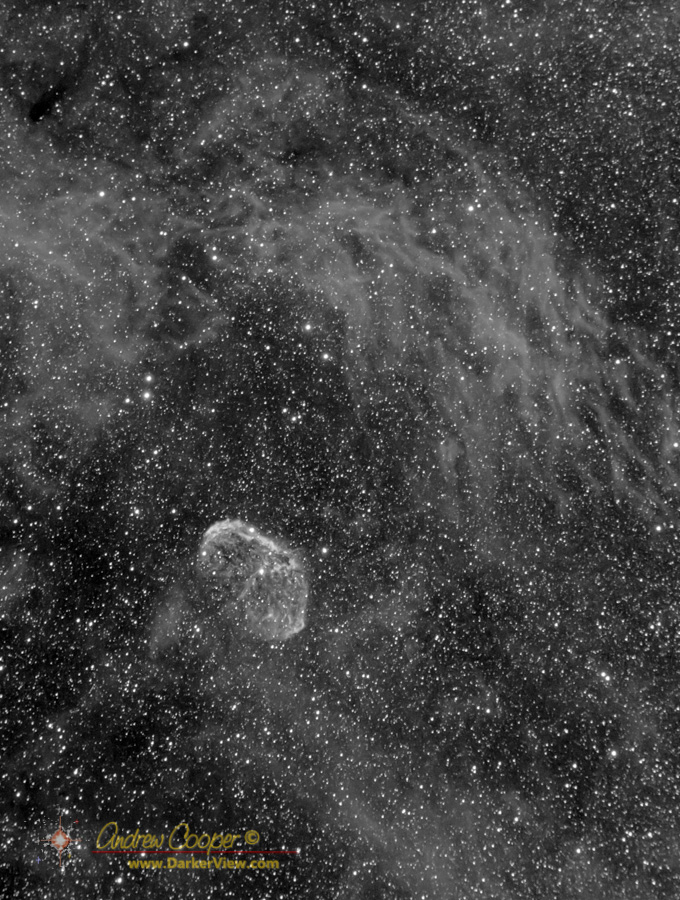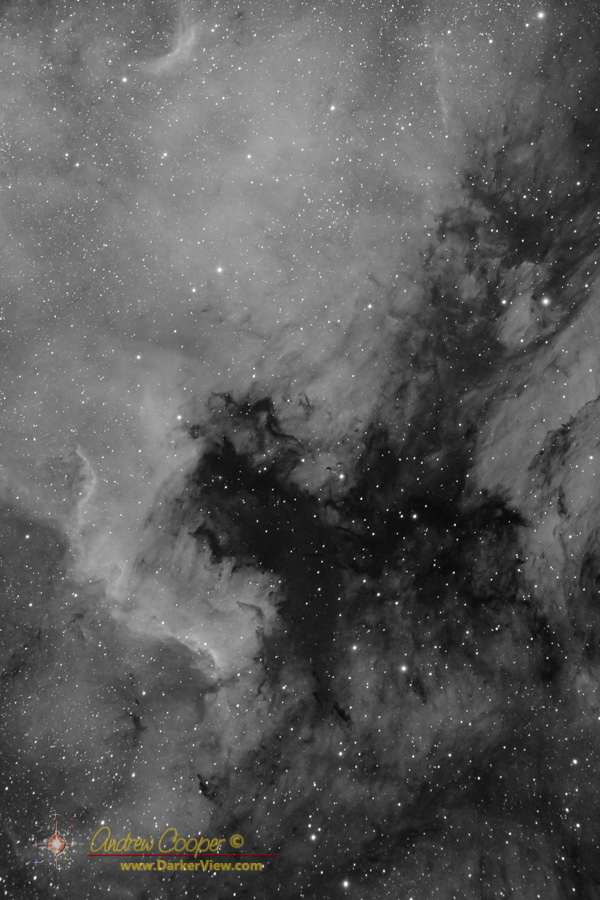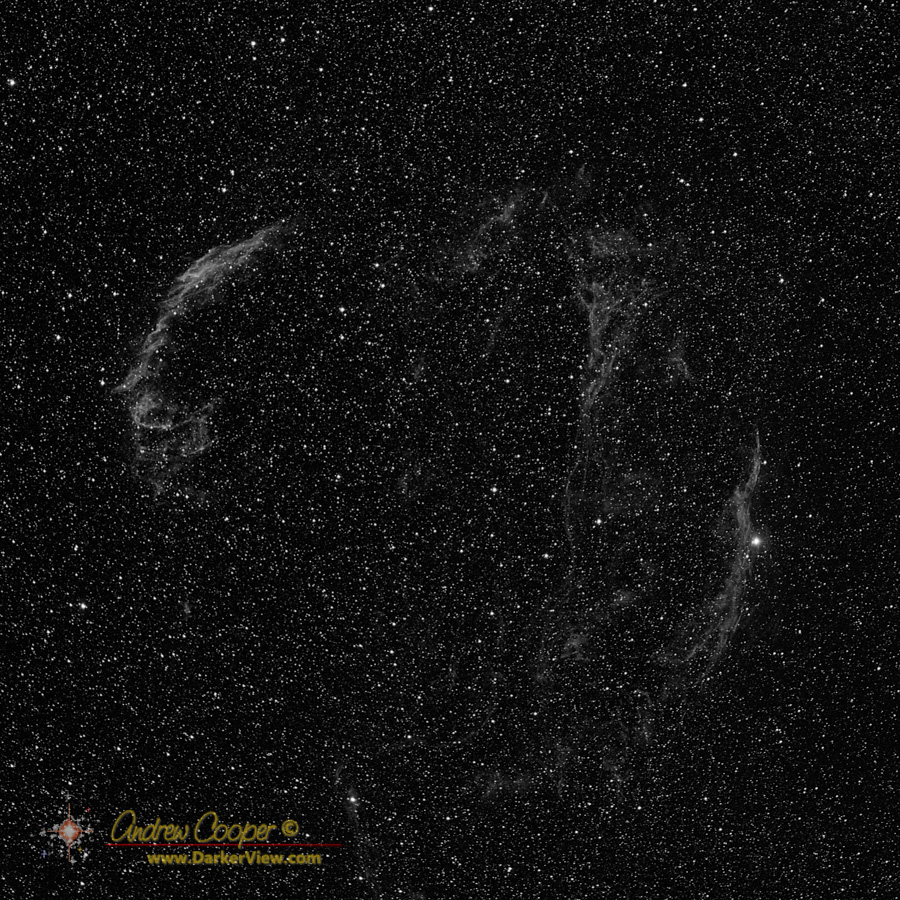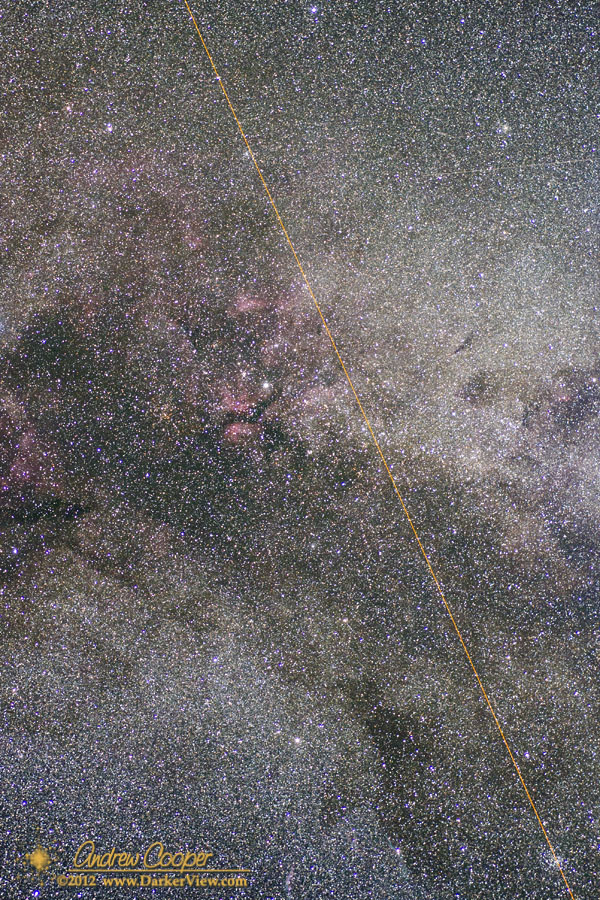
Tag: Cygnus
The North American Nebula
NGC7000 or The North American Nebula is found in Cygnus, just northwest of the bright star Deneb. A huge complex of glowing gas and dark dust the nebula covers and area several times larger than the full moon.
The image here is the sum of 60 individual frames, 30 at 1 minute and 30 more at 5 minutes of exposure taken with a TeleVue 76mm scope and a ZWO ASI1600mm Pro camera through a hydrogen alpha filter.

The Veil in Hydrogen Alpha
To allow a wider field of view requires changing optics. In this case putting away the TV-76mm telescope and mounting a vintage Nikkor 180mm f/2.8 ED camera lens.
The Nikkor 180mm is a classic lens, once a favorite of professional film photographers for news and portrait work. Now the lens is out of date, not autofocus, or image stabilized, a bit of very good optics left behind by technology.
Of course, autofocus or image stabilization are useless for astrophotography. With a simple adapter the lens can be mounted to a modern system and used as a fully manual lens in an application where the excellent optical quality can still be appreciated.

Astrophoto Interference on Mauna Kea
Mauna Kea is simply a great place to shoot astrophotos from. Dark, clear skies with typically good seeing. Unlike some mainland locations there is a distinct lack of aircraft overhead. I am not sure how many shots I have had ruined by the bright anti-collision strobes crossing through the frame when shooting from locations in Arizona.
There are hazards to shooting photos here that do not commonly exist elsewhere. I was unpleasantly surprised when reviewing the take the next morning to find brilliant yellow lines through a hour and a half of exposures taken of the Cygnus region. The material is otherwise great, the makings of a nice shot, except for this one little issue. There are ways of suppressing artifacts like this when processing, but the beam is so bright I am not certain they will work all that well.
Worse, I checked the schedule, the offending laser is coming from Keck 2 AO, a system I work on.
The observatories have a system in place to deal with this issue. There are four operational lasers on the mountain, Keck 1 and Keck 2, Subaru and Gemini. Each optical observatory using a laser maintains a server that posts their laser location, status, and calculates the position of each beam in the sky. This can be queried by the other observatories to check if the beam crosses the field of view. A set of rules has been negotiated to determine who has right of way, usually who is on target first.
Obviously this computer system does not take into account my little telescope shooting photos from Hale Pohaku. If I had known I could have called Heather and asked her to shutter her laser, I was on target first. Being the kind soul she is, she would probably laugh with me.

